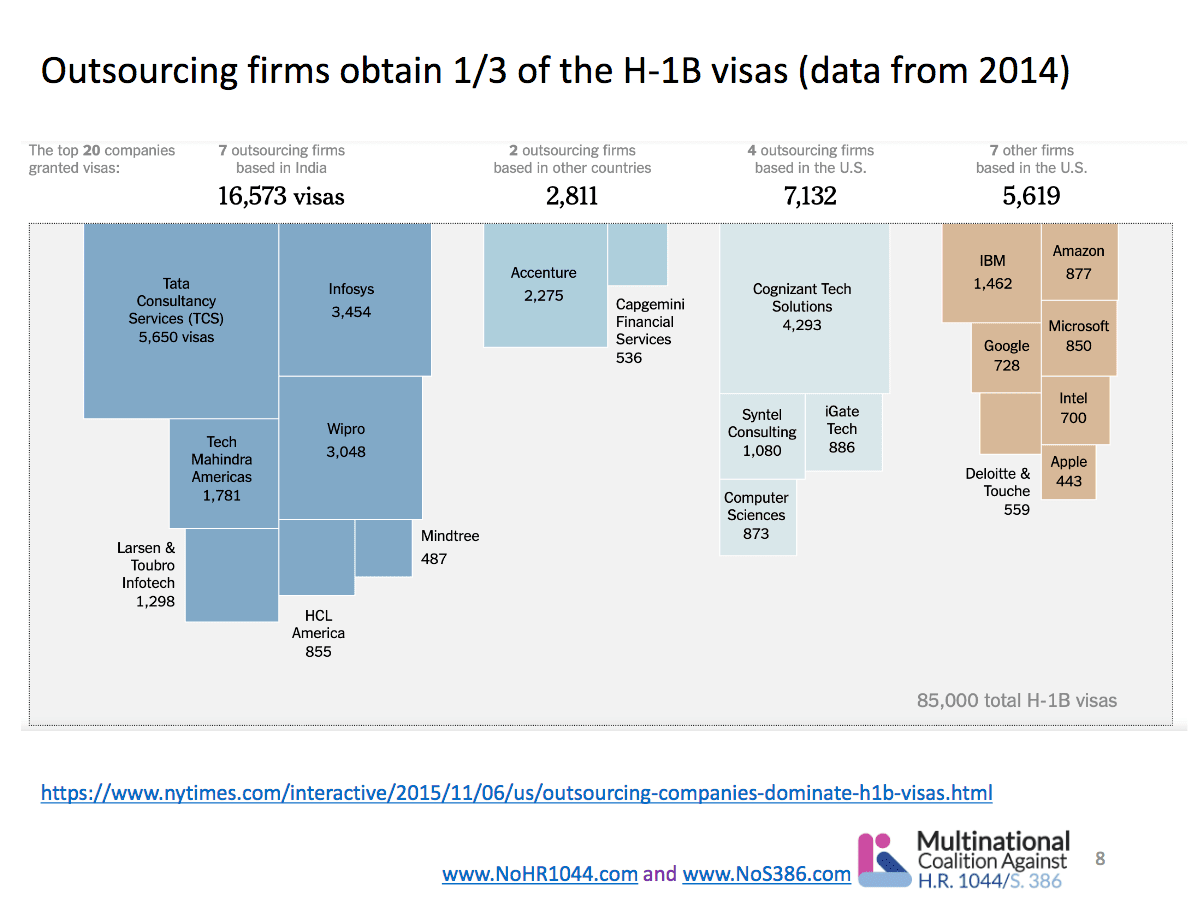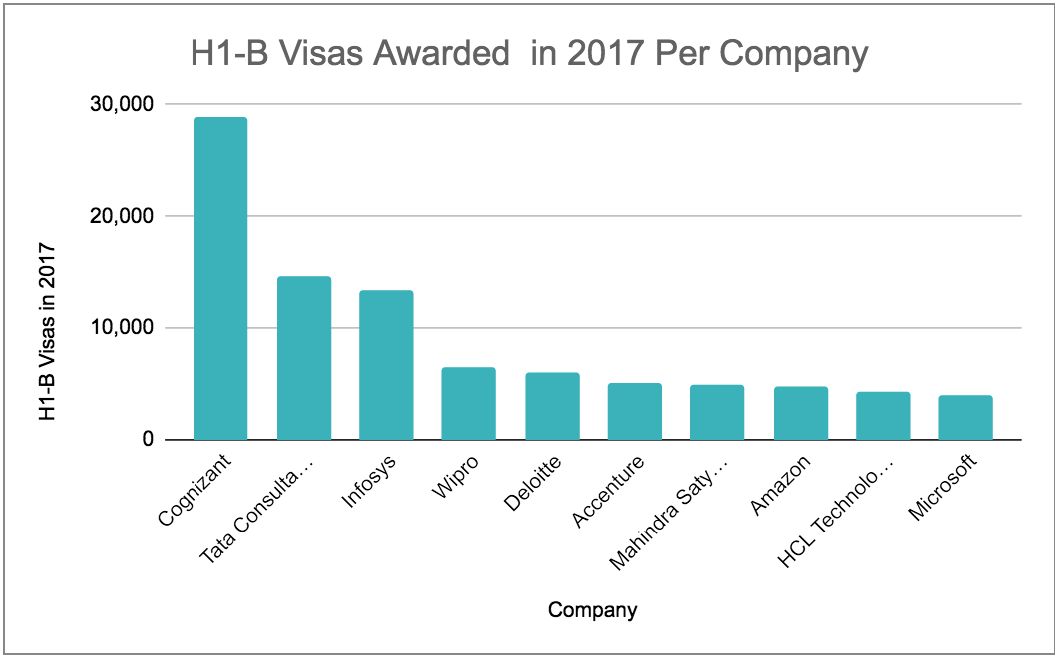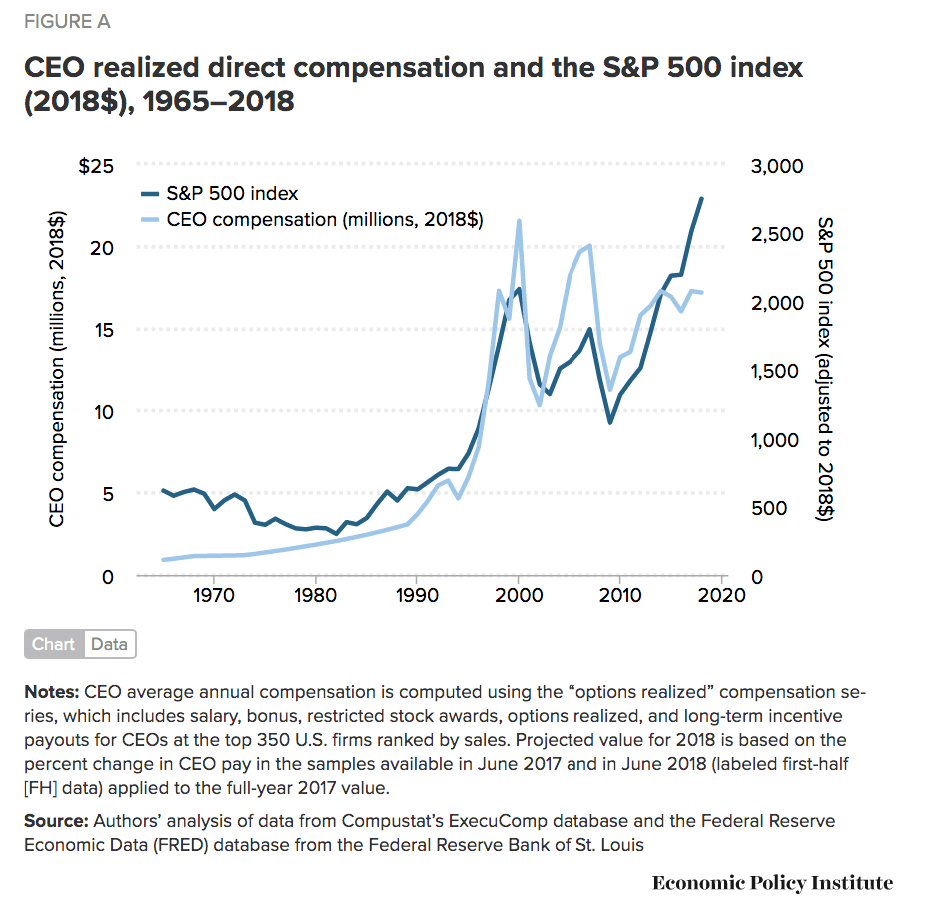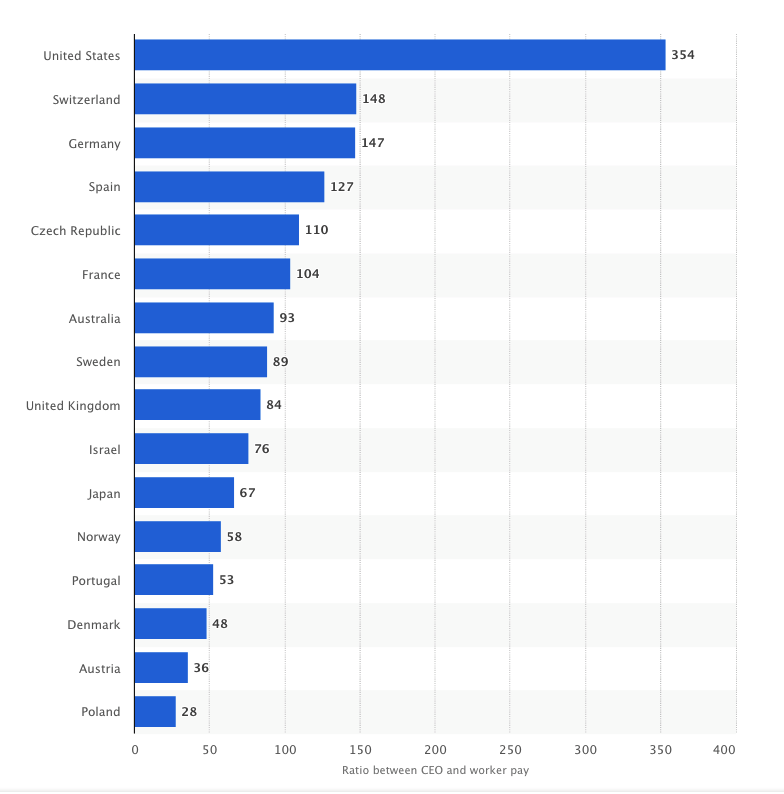How Companies Use the H1-B Program to Layoff and Displace Domestic Workers
Executive Summary
- Companies have been changing the usage of the H1-B program to layoff permanent employees and replace them with Indian H1-B workers.
- This use of H1-B workers has nothing to do with technical skills.

Many domestic workers are being told to pack up. Their Indian replacement has arrived.
Introduction
The H1-B program has been massively abused since its inception, and its abuse is only growing.
Cisco’s Abuse of the H1-B Program
Cisco Systems Inc. applied for about 3,000 H-1B visas in fiscal 2016, intending to hire people to work at its sprawling, utilitarian campus in suburban San Jose. These were good jobs — many of them for management-level logisticians and operations research analysts — and they paid well. The average annual salary was about $120,000. At the upper end, the company planned to pay a “senior corporate strategy director” $197,000 a year.
But these applications don’t tell the whole story of how Cisco planned to use the controversial visa program to supplement its workforce. The visa requests it submitted accounted for only 40 percent of the applications from 2016 for temporary visas for jobs to be located at its headquarters. The rest were submitted by IT firms, mostly from India, seeking to place workers with the company — about 250 companies in total. The only indications that Cisco had anything to do with these applications were the addresses listed as the place of employment— a piece of data that’s not included in the aggregated statistics on H-1B applications released by the Department of Labor. Silicon Valley companies don’t mention workers employed by contractors, also known as the contingent workforce, when discussing how they use the program, meaning the picture they give is incomplete. – Bloomberg
This is very odd. Why would Cisco be hiring its employees from 250 companies? Is this because these companies have the most H1-B allocations?
The number of H1-B allocations per company is published.

Notice that the Indian consulting firms have the dominant share of H1-B visas. These numbers of H1-B visas are pulled in every year, with the HR 1044 bill allocating even more H1-Bs to Indians.
Large Indian consulting companies have become quite proficient at rigging or scamming the H1-B program. The Indian consulting firms have been caught repeatedly falsifying documents to obtain H1-B visas for themselves. When caught, they pay a small fine, and they are never required to admit any wrongdoing.

A single company, Cognizant, brought in over 28,000 H1-Bs, nearly all from India in 2017. Is this a program for resources with unique skills, or a mass production system for importing cheap labor into the US?
Have H1-Bs? Then its Time to Layoff Domestic Employees
Cisco’s use of the visa program has been the subject of public attention over the years, as its executives have lobbied for its expansion even while conducting multiple rounds of layoffs. The company eliminated 940 jobs at its headquarters in 2016, and 390 more so far this year.
Not every application resulted in a new job at Cisco — fewer than a third of the applications for all industries in 2016 were accepted.
Still, taken as a whole, the applications show that Cisco is both more reliant on the H-1B program than previously acknowledged, and that the company uses it in a way that has not been fully understood. The contractors were not applying for visas covering the type of senior-level positions that Cisco sought for itself.
Instead, almost all of these visa requests were for jobs requiring little or no specialized knowledge. The average salaries for those positions were about 25 percent lower than the jobs Cisco applied for directly. – Bloomberg
When this is explained, the next quote from Cisco appears to be contradictory.
“Like many large companies, Cisco works with contracting firms to place high skilled workers on a contract basis,” Cisco said in a statement. “While we believe that it is critical to ensure that high skilled workers are able to come to the U.S. to work and innovate, the vast majority of our contingent workforce are U.S. citizens and permanent residents. In a highly competitive market for talent, Cisco is committed to fair pay in accordance with the market and without regard to immigration status. – Bloomberg
All of this is corporate-speak for the fact that more expensive domestic workers that have the protection of US employment law are to be replaced by H1-B workers that do not have employment protections because their future citizenship is tied to a company, as we cover in the article How H1-B Law Ties US Citizenship to the Employer.
The comment..
“the vast majority of our contingent workforce are U.S. citizens”
..is peculiar, because it does not address whether Cisco is using the H1-B program as it was intended. Secondly, the comment about “fair pay” is contradicted by the fact that they pay less for H1-B employees than US citizens. We cover this in the article The Wage Discount Employers Obtain from Hiring H1-B Visa Workers.
Companies That Hire H1-B Workers are All About Fair Pay?
What is fair pay?
There are two different standards of pay, one for H1-B and one for US citizens. However, every comment by Cisco attempts to hide this easily verifiable fact. This brings up the question of if the H1-B program is being used honestly, why do companies that hire H1-Bs so commonly lie about how the program is used?
This is covered in the following quotation.
Many of the companies calling for legislation to let in more foreign workers — Hewlett-Packard, Cisco Systems, United Technologies, American Express, Procter & Gamble, T-Mobile, Archer Daniels Midland, Verizon, and General Mills — have laid off thousands of Americans in recent years. Meanwhile, foreign guest workers account for one-third to one half of all new IT hires. – Sold Out
How Immigration Lawyers Helped Displace US Workers
Immigration lawyers are intent on displacing as many US workers as possible — as they get a little bonus for every US worker they displace, in the form of the fees from processing foreign workers. It could be said that the only occupation more anti-worker than the executive is the immigration lawyer.
Immigration lawyers explicitly made it legal for employers to replace Americans with lower paid H1-B workers in nearly all cases. The SCE workers are just the latest example of H-1B roadkill sanctioned by many of the lawmakers now complaining about it. In fact, two of the senators who signed the complaint — Sens. Richard Blumenthal (D-Conn.) and Claire McCaskill (D-Mo.) — are cosponsors of legislation to expand H1-B without any meaningful American worker protection reforms. – Sold Out
The Correlation of H1-B Visa Hires and Domestic Displacement
A more complicated story emerges from a novel analysis of public data conducted by Geoffrey Rhodes, general counsel at an IT services company in Columbia, South Carolina. Rhodes began poring over applications for H-1B visas looking for contact information for potential clients.
Out of curiosity, he began pulling documents whenever a company showed up in the news for displacing American workers. The information was available on each individual application, but absent from the program-wide data that can be easily downloaded from the website of the Department of Labor.
So Rhodes wrote software that scraped thousands of applications and fed them into his own spreadsheets. “It was more a hobby than anything– there was no benefit to my company,” he said. “I’ve pulled so many records I’m kind of surprised I haven’t gotten IP blocked or something.” Rhodes became so fixated on the data that he changed the banner on his Twitter account to a photograph of one of the Department of Labor disclosures.
Rhodes found that American tech companies are also utilizing large numbers of H-1B workers that are not highly skilled — they are just doing it through intermediaries. (emphasis added) – Bloomberg
This has been the issue with the H1-B program for years.
First, the H1-B program was only intended to be used to access workers who were so skilled that the position would stay unfilled unless the H1-B candidate could be imported into the US. However, the H1-B program has been so abused that virtually anyone can apply for it. This gets into the low standards of Indian undergraduate and graduate degrees (which can primarily be purchased) as well as a cottage industry of fake credentials.
How Displacement is Commonplace and Accepted
The following quotation explains this.
The idea behind the visa program was to allow American companies to quickly hire foreign workers with needed skills, which would in turn boost the U.S. economy. And at the outset of the program, laws were put in place specifically to protect American workers from being replaced by companies that might try to hire H-1B visa workers, and pay them less.
In the wake of the firings at Disney and Southern California Edison, there was outrage. A handful of Democratic and Republican Senators urged the Department of Labor to investigate potential visa abuse. Employees filed lawsuits and complaints. Ultimately, nothing happened with these investigations because replacing American workers with H-1B workers is perfectly legal in many cases. That’s due to a loophole in the law that exempts certain companies from complying with the requirement not to displace an American worker when they petition for one of the 85,000 H-1B visas available each year.
When the Immigration Act of 1990 created the H-1B program, the law required all employers to promise that they would pay foreign workers the area’s prevailing wage for their position in order to reduce the incentive of hiring them as cheaper replacement labor. It also required them to show that hiring foreign workers would not “adversely affect” the working conditions of current employees in similar jobs. But that didn’t necessarily protect all workers from being replaced with cheaper labor.(emphasis added) For instance, companies could get rid of older employees making a lot more money and hire new H1-B workers who didn’t have leverage in negotiating salaries. In 1998—during the tech bubble—lawmakers amended the law to provide more visas at the request of the growing tech industry. – The Atlantic
The displacement of US workers by H1-B recipients is now widely known.
Invariably the companies that do this, ranging from Disney to SCE to Cisco, have some corporate-speak to try to cover up and legitimize the fact, but the H1-B program was never intended to do this.
The design of the H1-B program was to be for new positions where the skills could not be found domestically. Not to allow companies to replace large numbers of domestic workers that already have jobs — to enable the companies to save on costs, and then to take those cost savings and hand them over to the executives at the company in compensation.
However, the original intent of the program was entirely undermined when a loophole was created that allowed any US domestic worker to be displaced as long as the compensation paid to the H1-B visa holder was at least $60,000.
Premediated Displacement
As with the SCE scandal, these leading offshore outsourcing firms use the H-1B program to replace American workers and to facilitate the offshoring of American jobs. Because of this, it’s likely that Americans lost more than 12,000 jobs to H-1B workers in just one year. FY13 H-1B data I’ve analyzed, acquired through a Freedom of Information Act request, reveals new details about how firms like Infosys and Tata are using the H-1B nonimmigrant visa program. Spoiler alert: they don’t use the H-1B visa as a way to alleviate a shortage of STEM-educated U.S. workers; they use it primarily to cut labor costs. But the other main arguments proffered to support an expansion of the H-1B program are easily debunked with even a cursory look at the H-1B data. – Economic Policy Institute
We deal more with the profit motivations for displacing/replacing US workers in the article The Amazing Profits in Displacing US Workers with H1-B Visa Workers.

Notice the rise in the compensation of US CEOs.

Notice the pay ratio of CEOs versus workers. It is by far the highest in the world.
CEOs and executives at companies do not think that their present massive ratio is high enough; thus, they continue to bring in H1-B workers to displace domestic workers. Perhaps the objective is to push CEO compensation to over 500 times the average compensation of their workers.
The Responsibility of Stopping Displacement of US Workers
The U.S. Department of Labor (DOL) is responsible for ensuring that foreign workers do not displace or adversely affect wages or working conditions of U.S. workers. For every H-1B petition filed with the USCIS, there must be included a Labor Condition Application (LCA) (not to be confused with the labor certification), certified by the U.S. Department of Labor. The LCA is designed to ensure that the wage offered to the non-immigrant worker meets or exceeds the “prevailing wage” in the area of employment. (“Immigration law has a number of highly technical terms that may not mean the same thing to the average reader.”[132]) The LCA also contains an attestation section designed to prevent the program from being used to import foreign workers to break a strike or replace U.S. citizen workers. – Wikipedia
However, observe the loophole provided by H1-B lobbyists that again renders this protection near useless.
The Gang of Eight bill also preserved a major, Grand Canyon sized loophole. The nondisplacement requirement was restricted so that the employer “will not displace a United States worker employed by the employer.” The employer could still displace American workers employed by other employers–which left open the loophole for using third parties (Tata, Infosys, and all other IT outsourcing companies) to replace American workers. – Sold Out
US workers have been displaced in massive numbers. As we cover in the article How the US Department of Labor is Useless in Policing The H1-B Program, the Department of Labor is not going their job in stopping this displacement from occurring. Notice the distribution of the H1-B visas for each company in the graphic further up in this article. Every year single companies are taking in several thousand H1-Bs. Some companies are bringing in tens of thousands of H1-B workers every year.
This is a mill, a mass production operation. This is not some reactive response to specific skills. And as we cover in the article How IT Outsourcing Firms Reduce Wages by Moving the H1-B Indian Worker Back to India, it is part of the business model of many companies.
And yet according to the Department of Labor, this is not displacing US domestic workers?
Let us perform a thought experiment. Let us say the H1-B program was stopped tomorrow. What would happen to those jobs? Would they remain unfilled? Or instead, would they go to domestic US workers instead of Indian H1-Bs? A large number of US domestic workers are being displaced and have been for since the early 1990s. However, The Department of Labor would have to be brain dead to think that no displacement was occurring.
Conclusion
Companies that use H1-B workers continually lie about who the workers are, their skill level, whether the H1-Bs are used to displace domestic workers, or whether H1-B workers are brought in because they are easy to control versus having unique or high skills.
Virtually every topic that could be lied about regarding the use of H1-B workers has been lied about.
References
https://www.theatlantic.com/business/archive/2016/12/fixing-h-1b-visa-loophole/509639/
*https://www.epi.org/blog/new-data-infosys-tata-abuse-h-1b-program/
*https://www.amazon.com/Sold-Out-Billionaires-Bipartisan-Crapweasels/dp/1501115944/
https://www.bloomberg.com/news/articles/2017-06-06/silicon-valley-s-h-1b-secret
There were about 460,000 people working in the country on H-1B visas in 2013, according to an estimate by the Economic Policy Institute. The American technology industry argues the visa program is a vital way to attract foreign-born workers with rare technical skills. But critics decry the visa program as a way for outsourcing companies to undercut the American labor market by paying low wages to mostly Indian-born workers.